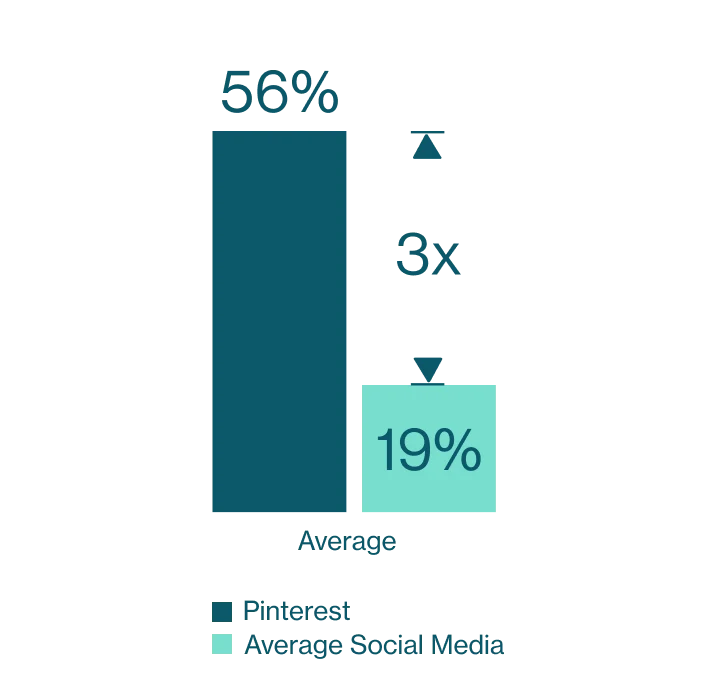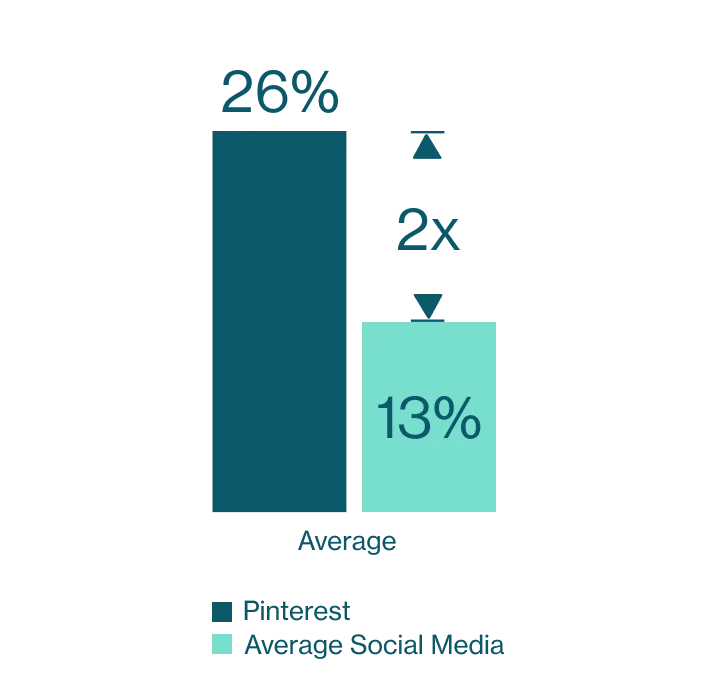Pinterest partners with WPP to measure video ad viewability
With major events postponed or canceled and advertising budgets under increased scrutiny, marketers are under pressure to achieve high returns on investment. For many, that means a greater reliance on video.

“Viewability is important—and not all impressions are created equal.”
Antoine Le Nôtre, Head of Measurement & Insights, Pinterest France, Southern Europe & Benelux
Viewability is key
With many big events postponed or cancelled this year, and advertising budgets slashed, the pressure on marketing teams has ramped up yet another notch. Doing more with less has become the norm – but video ads on Pinterest may give you the solution you need to do just that.
According to IAB Europe’s latest Attitudes to Digital Video Advertising research, nearly 60% of advertisers are investing in digital video to build their brand or gain a competitive advantage while 40% of agencies are using it to tell brand stories.1 It makes sense to put ad spend where your audience is. But video ads are only effective when they’re seen by real people.
Not surprisingly then, viewability has become table stakes—particularly since the Media Rating Council (MRC) redefined its Cross-Media Audience Measurement Standard. The new guidelines state that only viewable impressions should be counted to measure reach, frequency and gross rating points (GRP) across media for video campaigns.
That’s why we partnered with advertising giant WPP to measure and compare video ad viewability on mobile feed-based platforms, including Facebook, Instagram, Snapchat, Twitter and Pinterest.
Defining video ad viewability

For a video ad to be considered viewable, the MRC says that at least 50% of the ad content must be visible on the screen for at least two seconds and viewed by a real person.
At Pinterest, we agree with this approach. Here’s why: Measuring reach without keeping viewability in mind can mislead advertisers into thinking their campaigns have great reach and frequency when the ad hasn’t reached eyeballs. For example, below-the-fold impressions (ads out of view on the user’s screen) or impressions counted even though the ad didn’t load before the viewer moved elsewhere.
Pinterest에서 노출 여부 벤치마킹
Pinterest는 MRC 인증을 받은 타사 노출 여부 측정 공급업체인 MOAT, IAS(Integral Ad Science), DoubleVerify와 협력하여 자사 플랫폼에서 광고의 노출 여부를 측정합니다. Pinterest에서는 2019년 9월, 여러 모바일 피드 기반 플랫폼의 동영상 광고 노출 여부 성과를 비교 파악하고자 WPP와 협력 관계를 체결했습니다.
WPP는 다음 기준을 근거로 다섯 가지 캠페인을 선정했습니다.
Pinterest를 포함해 Facebook, Instagram, Snapchat, Twitter 등 기타 모바일 피드 기반 플랫폼 두 곳 이상이 참여한 캠페인
짧은 길이의 동일한 동영상 자산(5초~15초)을 여러 플랫폼에 게재
도달 범위, 브랜드 인지도나 동영상 조회수에 최적화된 캠페인
MOAT 또는 IAS와 같이 MRC 인증을 받은 노출 여부 측정 공급업체가 동일 캠페인을 대상으로 결과 측정
Video view rate benchmark

WPP analyzed 221 million video impressions across five brand campaigns in three verticals (beauty and personal care, food and drinks, luxury) from September 2019 to February 2020. Based on the MRC standard, video ads on Pinterest had a 3x better view rate compared to the average social media platform.
Video completion rate benchmark

Additionally, the video completion rate on Pinterest (the percentage of times the ad played to the end) outperformed the average social media platform by 2x.

Context matters
Other mobile feed-based platforms may have more users but they’re ad-heavy environments that often bombard people with irrelevant messages that aren’t of interest. This makes it difficult for advertisers to cut through the clutter and make their ads count.
Plus, context is everything. On Pinterest, there’s a natural alignment between what people are there to do (get ideas and inspiration) and what advertisers are there to do (enable them to act on that inspiration). That’s why video ads on Pinterest are additive to the Pinner experience. They don’t interrupt, they inspire. And because there’s more static organic content on Pinterest than other mobile feed-based platforms, it’s easier for video ads to stand out, breakthrough and capture the attention of Pinners.
In 2020, video views on Pinterest increased more than 3x over the previous year. Bottom line: video ads on Pinterest can be a great driver of ROI for marketers. That’s something to keep top of mind while planning for the remainder of 2020 and beyond.